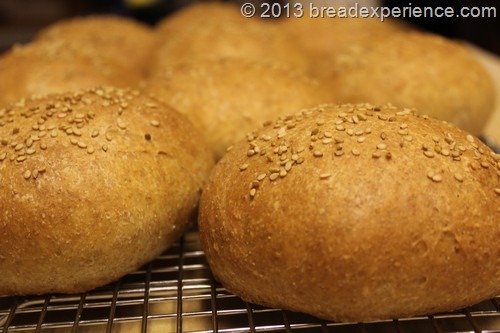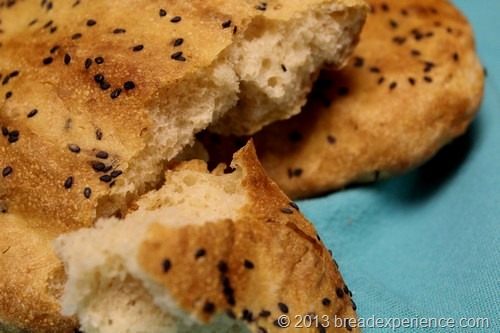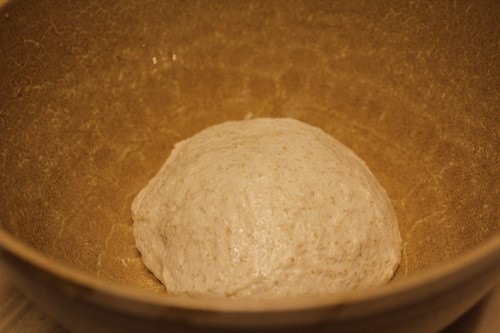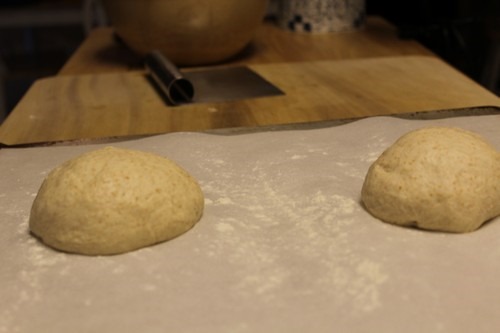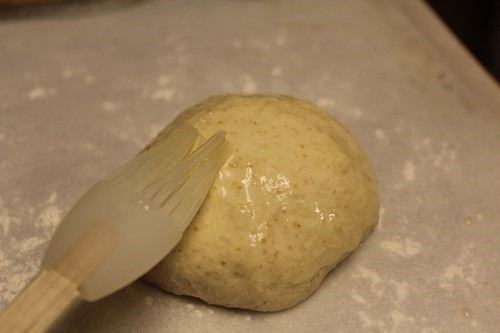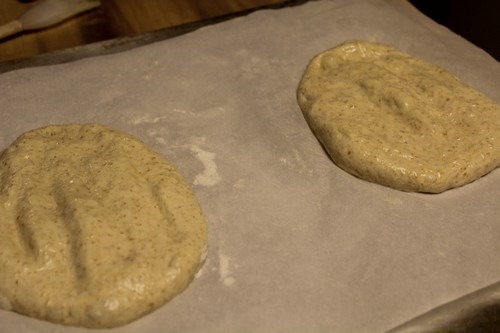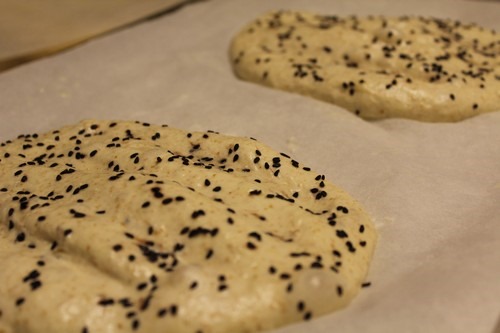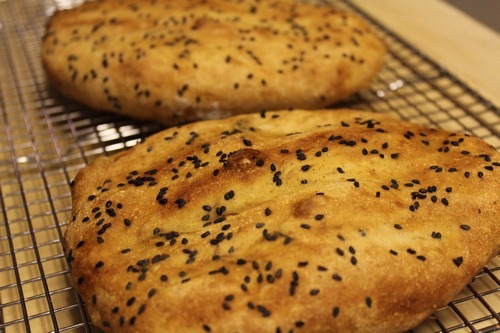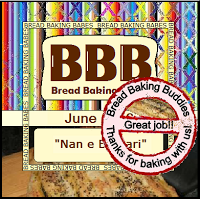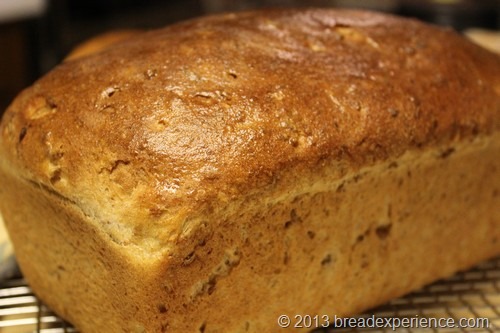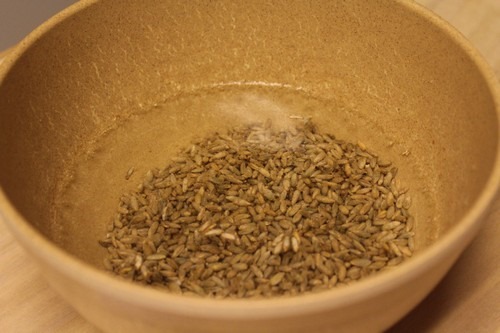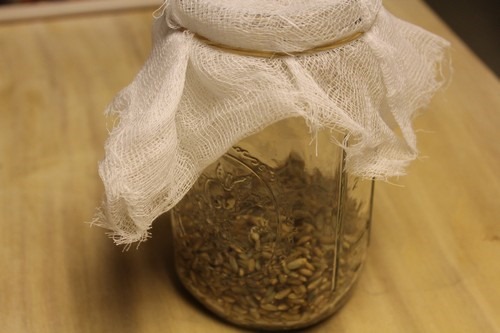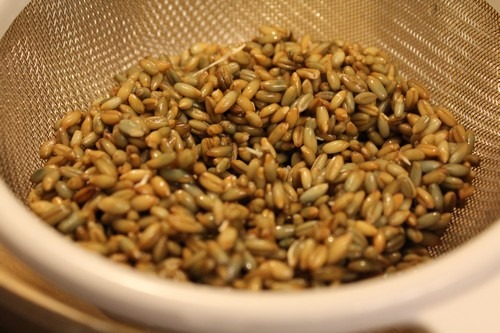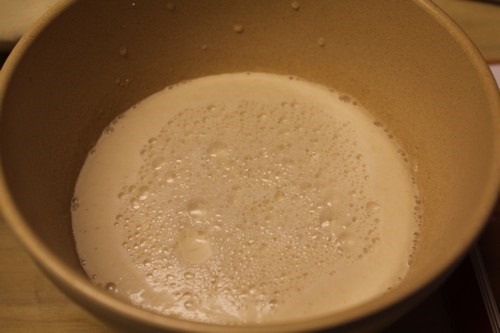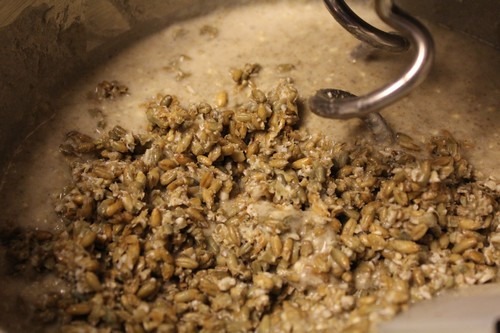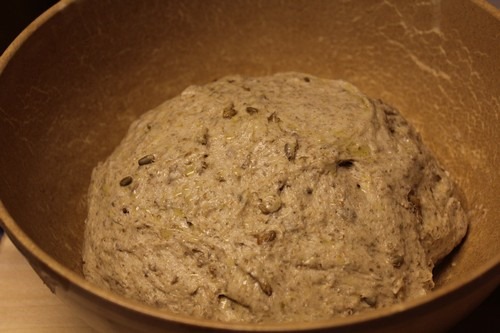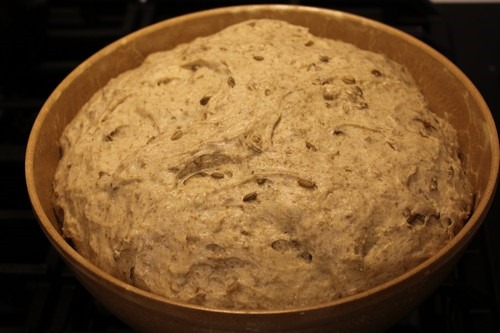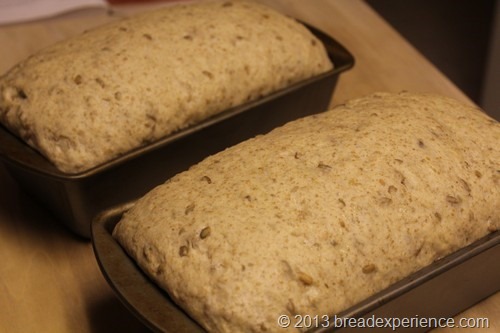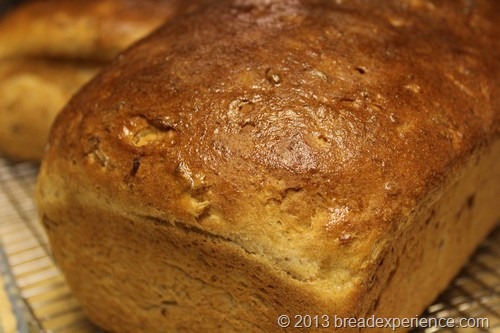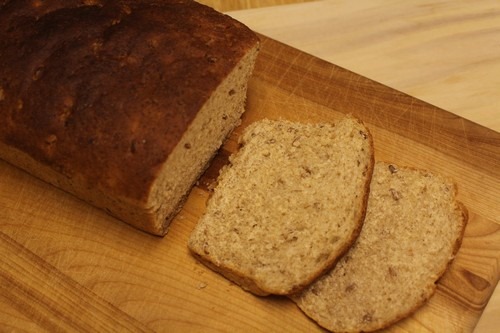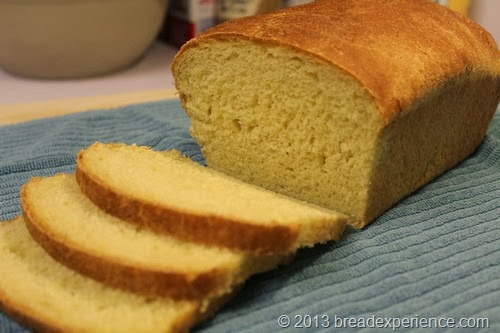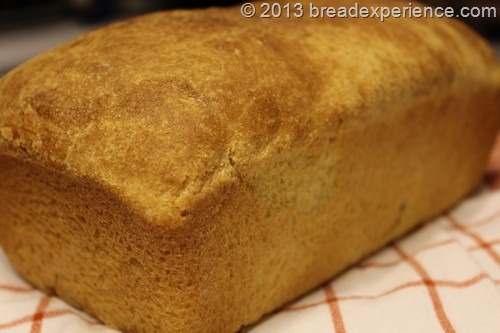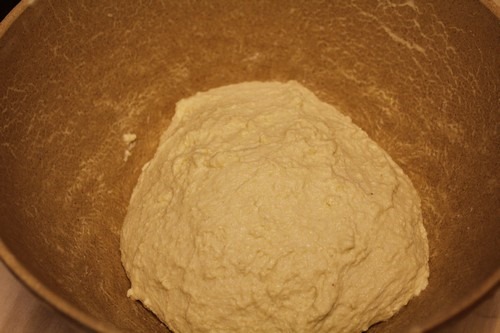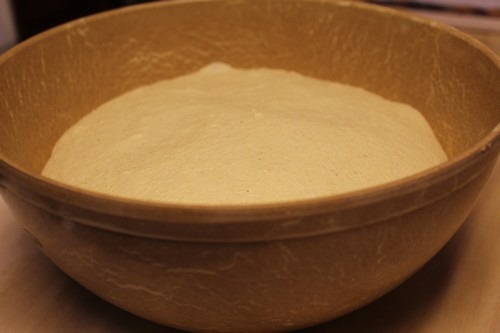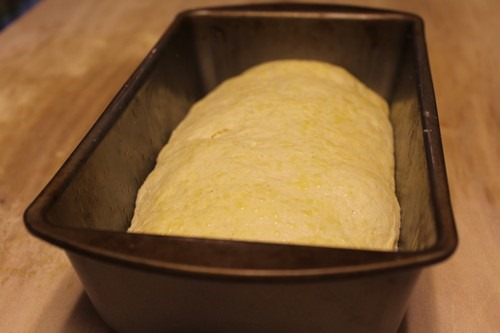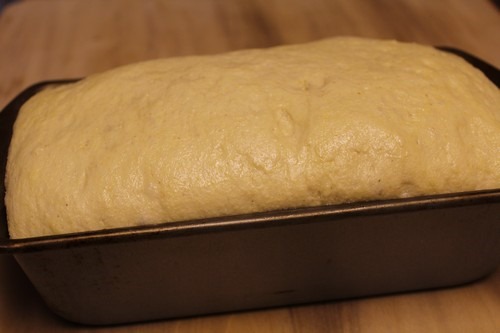The bread of the month for the Artisan Bread Bakers is Pumpernickel. The formula, from David of Hearthbakedtunes, is an olde-style pumpernickel that utilizes stale bread, rye berries, rye chops, rye meal and bread flour.
The timing couldn’t have been better for making this bread. I have been experimenting with a new Einkorn bread recipe and after several (less than successful) attempts, I had plenty of old bread to work with. The test breads tasted fine, they just didn’t look very good. When I found out we were making this bread, I knew I could put the leftover bread to good use. It made a unique addition to this bread.

The method for making this bread is similar to the Volkornbrot the Mellow Bakers made a couple of years ago, with a couple of variations. The Volkornbrot utilized a flaxseed soaker and a rye chops soaker, but this bread utilizes an old bread soaker and a rye berry soaker. This bread is leavened with sourdough but due to the weight of the soakers, the rye chops and rye flour, it also includes some dry yeast to give it some lift.
Even though this was a heavy dough, it rose really well during the bulk fermentation and the final proof in the pan. If I hadn’t had the lid on, it probably would’ve risen right over the top of the pan.
Olde-Style Pumpernickel Bread
Makes: 1 Pullman Loaf
Adapted from: Pumpernickel Bread on the Artisan Bread Bakers FB page.
I used rye flakes instead of rye chops because that is what I had. I also used whole rye flour that I milled in my grain mill instead of using rye meal. Rye meal is a rougher grind of pumpernickel or rye flour, but you can substitute whole rye flour.
Ingredients:
Sourdough Build:
- 9.6 oz Whole Rye Flour
- 9.6 oz Water
- 0.5 oz Rye Culture (I used this rye levain)
Rye Berry Soaker:
- 6.4 oz Rye Berries
- Water, as needed
Old-Bread Soaker:
- 6.4 oz Old Bread (I used some stale Einkorn bread)
- Water, as needed
Final Dough:
- 8 oz Bread Flour (more for sprinkling if necessary)
- 8 oz Rye Flakes (or Rye Chops)
- 12.8 oz Water (if needed)
- 0.6 oz Kosher Salt
- 2 teaspoons Instant Yeast
- 1.3 oz Black Strap Molasses
- Berry Soaker (all of the above)
- Bread Soaker, drained (all of the above)
- Sourdough (all of the above)
Method:
Making the Rye Berry Soaker:
Place the rye berries in a bowl and cover them with water by an inch or so. Soak the berries overnight.
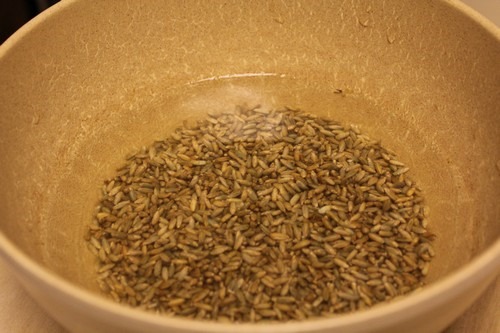
The next day, rinse and drain the berries. Cover them in three times their volume in water. Bring the berries to a boil, reduce to a simmer, and let them cook for about an hour, until they are soft and pliable. The berries will increase significantly in size.
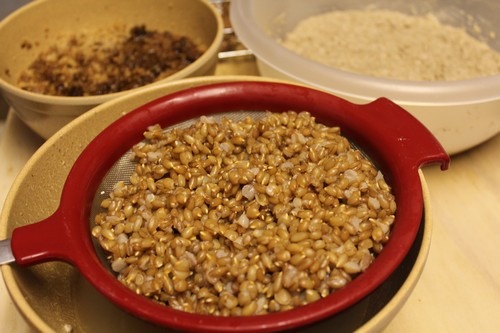
Sourdough Build:
In a small bowl, add the water, then mix the starter in the water. Add the rye meal and mix with a wooden spoon or Danish dough whisk until it is thoroughly incorporated. Let the sourdough rest for 14-16 hours at 70 degrees F.

Old Bread Soaker:
Take the stale bread, toast it in the oven until it is really brown, almost burnt, but not quite.
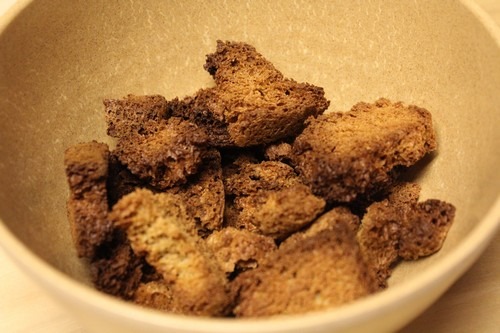
Add water as needed to cover the toasted bread and let it soak for at least four hours, if not longer, until it becomes a sticky, gooey mess. Be sure to squeeze out as much of the liquid as possible before you use the soaked bread in this bread. You probably won’t need to add any additional water in the final dough mix.
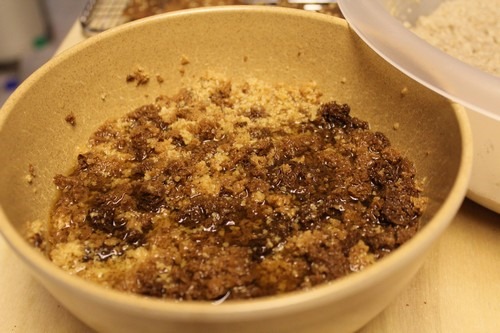
Mixing the Final Dough:
Add the rest of the ingredients, except for the water. The bread soaker and berry soaker will absorb water in varying amounts so you might not need any additional water. I didn’t. Mix the dough on first speed for ten minutes. Add flour (or water) as necessary to get a dough you can work with, but don’t expect too much development with the dough since it’s mostly rye.
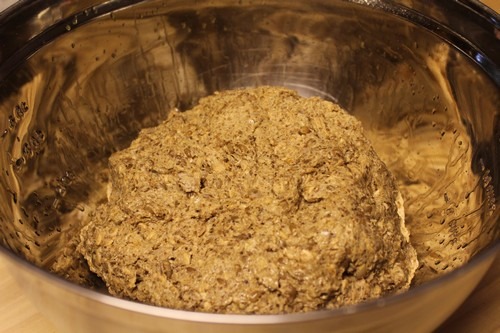
Bulk Fermentation:
Let the dough ferment for 30 minutes.
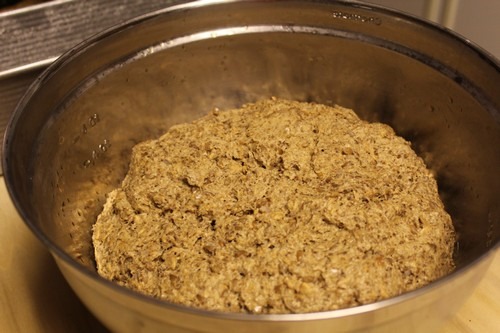
Shaping the Loaf:
Spray the inside of a Pullman pan and the lid with cooking spray and dust heavily with rye flour to keep the bread from sticking to the top and sides of the pan. This will also help insulate the dough during the long bake.

Remove the dough from the bowl and place it on a floured work surface. Shape the dough into a log the length of the pan. Place it in the Pullman pan.

Final Proof:
Using your fingers, spread the dough out evenly in the pan and sprinkle the top with flour and a little more oil, if desired.
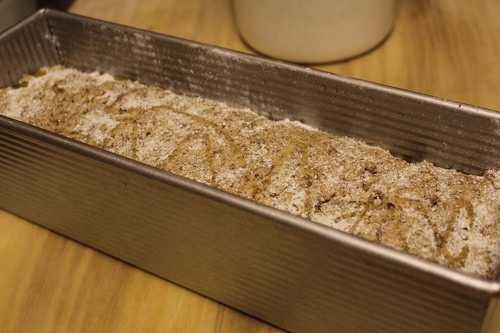
Slide the lid on the pan.
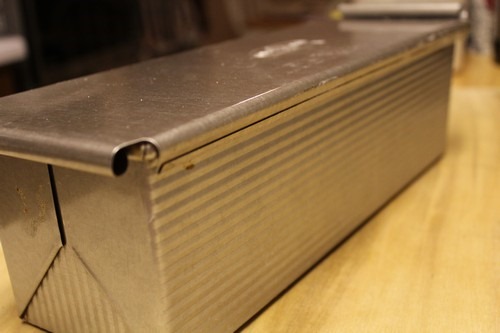
Let the loaf proof in the pan, with the lid on, for about an hour, or until the dough is almost even with the top of the pan. I took the lid off to make sure it had risen enough, then I slid it back on.
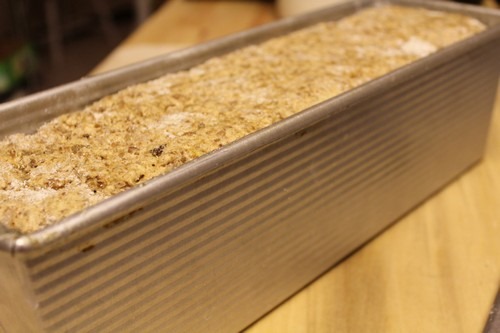
Baking the Loaf:
Note about the baking process: This bread was designed to be baked overnight in the oven while it was receding in temperature. This was so the baker could utilize the hot oven, while it was not in use. In order to simulate this method in a home oven, you need to follow the steps listed below:
1) Preheat the oven to 350 degrees F., with a baking stone on the bottom rack and the middle rack removed.
2) Place the loaf (in the covered Pullman pan) on the preheated baking stone and let it bake for an hour at 350 degrees F.
3) Remove the baking stone, if possible (without breaking it due to temperature change). This will prevent the bottom crust from getting over baked.
4) Reduce the oven to 275 degrees F. and bake the loaf for 3 1/2 more hours.
5) Turn the oven off for the remainder of the bake cycle. Just let the bread rest in the oven while the oven cools down, about 10 – 12 hours. My oven was cooled down before that time, but I just left the loaf in the oven the required time.
During the extended bake cycle, DO NOT OPEN THE DOOR. DO NOT PEEK! DO NOT TOUCH! These were our instructions. David said the Rye King would come after us if we peeked or touched it before the bake cycle was complete.
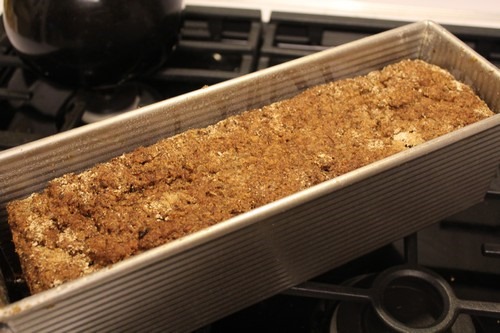
Cooling and Resting the Loaf:
Do not cut into the loaf until it has rested for 24 hours! I let it cool on the wire rack until it was completely cooled. Then I wrapped it in foil and let it sit for 24 hours.
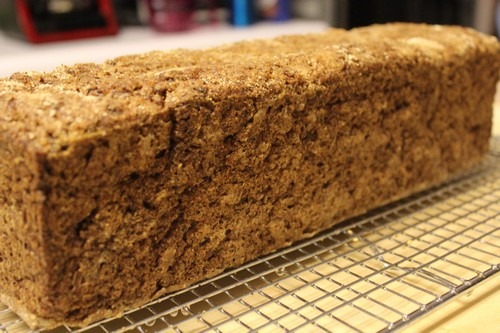
Slice and Enjoy!
I baked this bread for a friend of mine who will be hiking part of the Appalachian Trail. This dense loaf is full of nutrients and has good keeping quality so it’s the perfect bread to take a long on a hiking trip. I know this because I’ve taken this type of bread with me on a hike before, and it was very satisfying for me and the other hikers. The loaf is so big, there’s plenty to share.

Happy Baking!
Cathy
